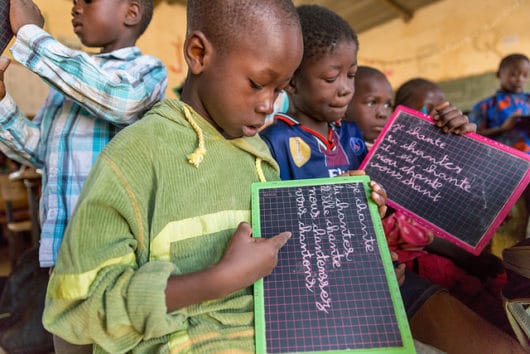Top 10 Facts About Living Conditions in Burkina Faso

Located in Western Africa, Burkina Faso is the country with a lot of problems that are affecting over 20 million of its people.
The unemployment rate has increased constantly in the previous years, and a lot of work needs to be done regarding this issue.
Developments have been made in efforts to reduce poverty, one of them being the work of active labor market program, or ALMPs.
In addition, the National Housing Program is helping in the endeavor to meet the need for affordable housing. There have also been efforts to commit to providing education for all citizens by 2015.
With continued effort, more developments can be seen in aiding people’s lives in Burkina Faso.
In the article below, top 10 facts about living conditions in Burkina Faso are presented.
Top 10 Facts about Living Conditions in Burkina Faso
- The unemployment rate of the total labor force increased from 2.6 percent to 6.4 percent from 1991 to 2016. From 2000 to 2016, the unemployment rate for women has increased from 2.8 percent to 9.3 percent, and the youth unemployment rate has risen from 3.8 percent to 8.6 percent in the same period.
- The country is still struggling to reduce its poverty rate in order to improve living conditions. With population and labor force growth, the country has not yet lifted its people out of poverty by a high number. According to a World Bank report on employment and skills development in Burkina Faso, the country must create more than 400,000 new jobs by 2030, given the population dynamics.
- In the same report of the World Bank, a number of solutions to combat and reduce poverty are presented. One way to help all people achieve growth is to create an investment environment that aids people. Another way is to enhance the infrastructure and financial system and bolster economic governance, health and education.
- Another strategy to generate jobs and reduce poverty is to find and support the most effective policies. One initiative to combat poverty is the Active Labor Market Programs (ALMPs). The purpose of these programs is to increase the chance of being employed and to increase jobs in the country. ALMPs are comprised of training people in order to get them employment and increasing demand for jobs through initiatives such as public works.
- Burkina Faso has a growing housing finance sector. There is a strong correlation between urbanization and housing. As more people are moving to cities, there is also a higher demand for affordable housing. Currently, the urbanization rate in the country is 5.73 percent. One successful way to increase the amount of housing is through microfinance.
- Estimates from the Ministry of Housing and Urban Development show that the urban population in Burkina Faso will double by 2030. The National Housing Program started by the government is one initiative that is part of the solution to address the need for affordable housing. The initiative endeavors to provide 40,000 houses by 2020 to low-income families. The initiative also aims to provide sustainable solutions for the need for affordable housing.
- With the help from some community health initiatives, some progress has been made in bolstering the national health system. The national health system in Burkina Faso is made up of the public and private medical sector. One positive development in this area has been hospital reform, that aimed to deliver emergency care without prepayment.
- While the budget of the Ministry of Health has increased, it is still far away from a satisfactory level. The budget increased from $132,6 million in 2007 to $162,3 million in 2009. The percentage of the state budget aimed towards the health sector has risen from 15.21 percent in 2008 to 15.46 percent in 2009.
- Burkina Faso has some of the lowest literacy and school enrollment rates in the world. The literacy rate has risen by 30 percent in 2001 to 32.5 percent in 2005. Primary school net enrolment ratio in 2011 was 63.2 percent.
- Out of the total children in schools, 65.7 percent of boys are enrolled in school, compared to 54.5 percent of girls. The country has committed to the 10-year Plan on the Development of Basic Education and the National Policy of Integrated Development of Children.
While unemployment has increased and there is still more work to be done in closing the gender gap in education, living conditions in Burkina Faso have improved, as seen in poverty reduction efforts through ALMPs and providing affordable housing.
With more sustained effort, Burkina Faso can achieve more positive developments in helping to enhance the quality of life for all.
– Daniel McAndrew-Greiner
Photo: Flickr
